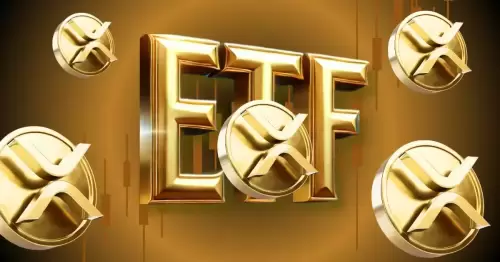 |
|
 |
|
 |
|
 |
|
 |
|
 |
|
 |
|
 |
|
 |
|
 |
|
 |
|
 |
|
 |
|
 |
|
 |
|
Cryptocurrency News Articles
Tether throws a wrench into the European regulatory pond
May 03, 2025 at 12:05 am
Tether is throwing a wrench into the European regulatory pond: its CEO has categorically refused to submit USDT to the MiCA framework. A decision that could disrupt the stablecoin market in Europe, weaken crypto exchanges, and highlight a direct clash between regulation and global financial innovation.
A Regulatory Framework Deemed Too Restrictive by Tether
In a surprising move, Tether CEO Paolo Ardoino confirmed that the company will not be submitting its flagship stablecoin, USDT, to the new MiCA regulation in Europe. Despite the new crypto rules coming into effect shortly, the Tether leader prefers to continue operating without this legal umbrella.
Speaking at the Token2049 summit in Dubai, Ardoino slammed the framework, which he considers “dangerous” for stablecoins and could weaken European banks. According to him, MiCA's requirements, such as the obligation to place 60% of stablecoin reserves in insured bank deposits within the EU, pose major risks to the European banking system.
"I must protect our 400 million users worldwide, not just Europeans," he stated emphatically. He accuses the European Central Bank of using MiCA as leverage to promote the digital euro and restrict citizens' financial freedom.
Towards Marginalization in Europe?
Europe is wary of Tether's growing influence, as behind its stablecoin lies a geopolitical threat: it is backed by the US dollar, reinforcing the greenback's dominance at the very heart of the eurozone. By allowing USDT to circulate easily, Brussels risks losing monetary sovereignty, becoming overly dependent on the United States, and hindering the expansion of the digital euro.
MiCA is therefore a regulatory barrier to limit the expansion of an asset that could become a financial influence weapon. This move has prompted crypto platforms like Kraken and Binance to quickly react by removing several stablecoins, including USDT, from their European operations to stay compliant with this regulation.
This decision could ultimately curb the use of Tether, the world's most capitalized stablecoin, in Europe, pushing platforms and users to turn to other cryptos that are fully compliant and regulated, such as Bitcoin or Ethereum.
Tether's refusal to adopt MiCA showcases the standoff between European regulation and crypto giants. This decision could disrupt the balance of stablecoins in the EU, further deepen the regulatory divide, and push platforms to quickly reconsider their strategies amid a market in deep reconfiguration.
Maximize your Cointribune experience with our "Read to Earn" program! For every article you read, earn points and access exclusive rewards. Sign up now and start earning benefits.
Disclaimer:info@kdj.com
The information provided is not trading advice. kdj.com does not assume any responsibility for any investments made based on the information provided in this article. Cryptocurrencies are highly volatile and it is highly recommended that you invest with caution after thorough research!
If you believe that the content used on this website infringes your copyright, please contact us immediately (info@kdj.com) and we will delete it promptly.
-

-

-

- Blockchain Deposit Insurance Corporation (BDIC) Appoints Oliver Pluckrose as CTO
- Jun 14, 2025 at 04:35 pm
- BDIC, the first to market providing cryptocurrency deposit insurance for digital currency wallets and crypto exchanges, announced today that Oliver Pluckrose has accepted the company’s offer to become the Chief Technology Officer.
-

- An upcoming Bitcoin software update will increase the data limit on a divisive function that will allow significantly more images, text and documents to be stored on the Bitcoin blockchain
- Jun 14, 2025 at 04:35 pm
- The Bitcoin Core 30 update slated for Oct. 30 will remove the 80-byte limit on the controversial OP_RETURN function and allow each output to carry up to 4 megabytes of data
-

- GameStop (GME) shares drop after-hours as the video game retailer reported mixed results for its first quarter
- Jun 14, 2025 at 04:30 pm
- GameStop Corp (GME) shares dropped after-hours on Tuesday as the video game retailer reported mixed results for its first quarter, showing significant operational improvements
-

-

-

-





























































